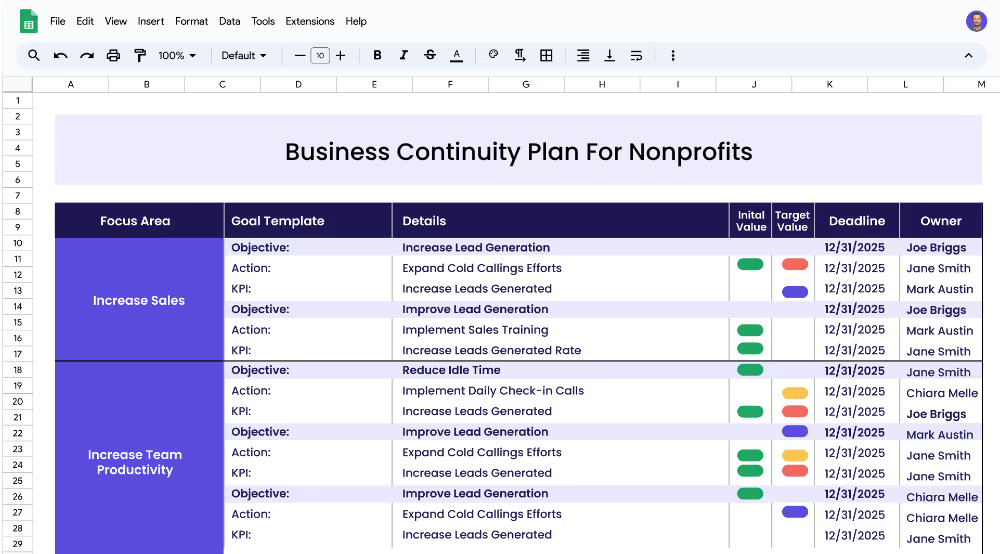A business continuity plan for nonprofits is a strategy that enables the organization to prepare for and respond to unexpected events or crises and maintain the continuity of their operations, services, and programs. It includes identifying risks, creating preventative and corrective measures, and allocating resources to ensure the organization’s ability to survive and thrive during times of disruption.
Each focus area has its own objectives, projects, and KPIs to ensure that the strategy is comprehensive and effective.
The Business Continuity Plan For Nonprofits template is designed for organizations of various types, such as charities, foundations, and social enterprises, to develop their business continuity plans. It provides a framework for organizations to mitigate the negative effects of a crisis and ensure the continuity of their operations, services, and programs.
A focus area is a broad area of interest that an organization wants to address in its business continuity plan. Examples of focus areas could include emergency preparedness, data backup, and recovery, or communication. Each focus area should have objectives and actions that are tailored to the specific needs of the organization.
Objectives are the goals that the organization wants to achieve within each focus area. They should be specific, measurable, and achievable. An example of an objective could be 'Develop Emergency Procedures' under the focus area of emergency preparedness.
KPIs are measurable targets that are used to track the progress of an objective. Examples of KPIs could include the number of emergency drills run in a given period, the number of emergency procedures developed, or the number of backup and recovery plans created. Each KPI should have an initial value and a target value to measure progress.
Projects are the actions that are taken to achieve the objectives and KPIs. They should be specific and measurable. Examples of projects could include creating emergency response and evacuation plans, running emergency drills and evaluating the efficacy of the plans, or creating a plan to ensure the availability of data.
If you're ready to elevate your approach to business continuity and see more robust, agile results, Cascade Strategy Execution Software offers a sophisticated platform that outshines traditional spreadsheets. With features like real-time updates, centralized collaboration, and automated reporting, Cascade enables your team to track progress, adapt swiftly to any changes, and stay perfectly aligned with your strategic vision. Forget manual updates and scattered data—integrate your planning and execution seamlessly with Cascade. Sign-up for free or book a demo with one of our strategy experts to propel your organization forward efficiently.


